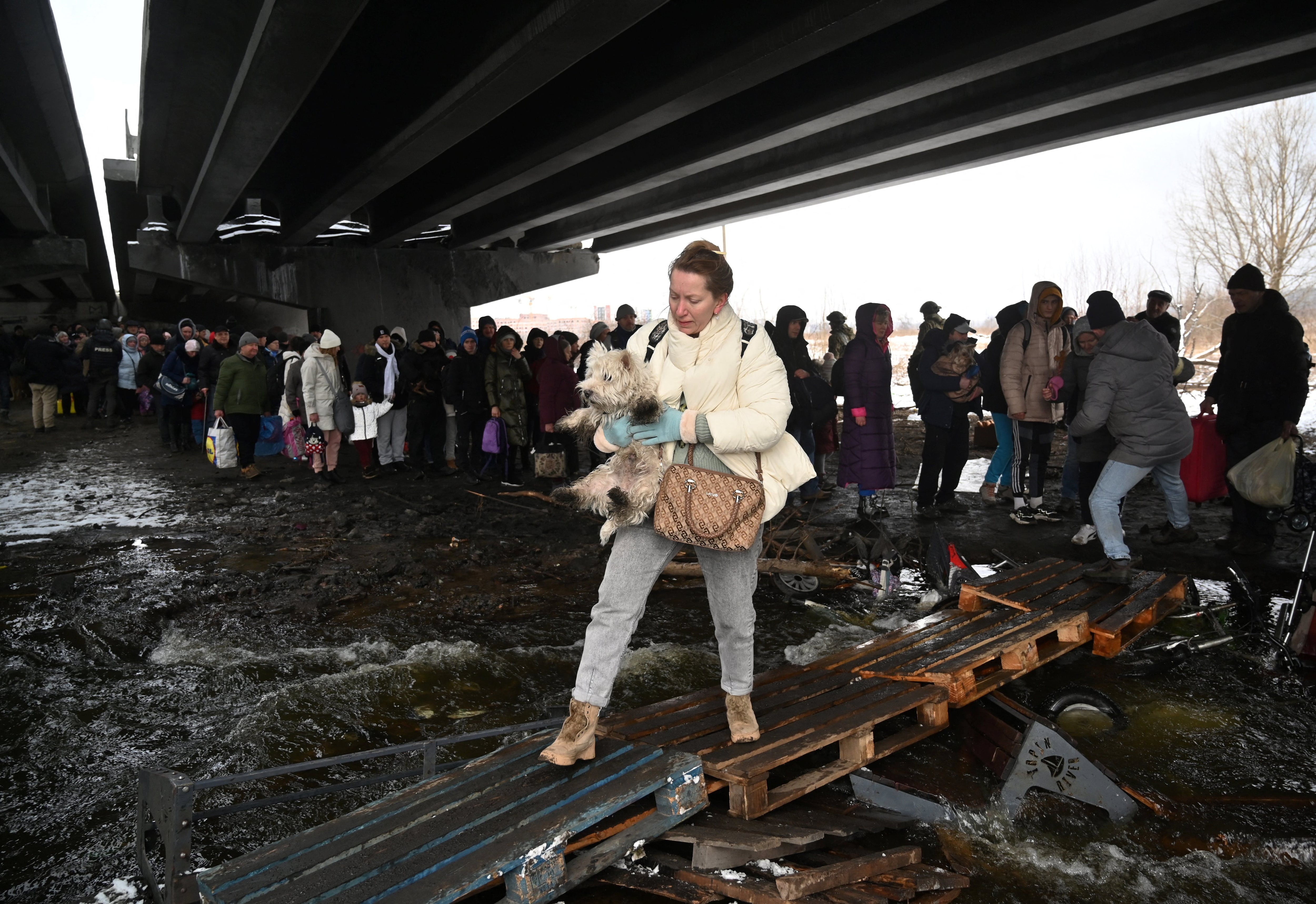
The vast majority of Ukrainian families flee the war pulling a dog’s leash or holding a cat’s carrier, which has led neighbors and NGOs in Poland to donate feed, toys, leashes and harnesses for petswhile other organizations try to care for or rescue animals trapped in zoos in Ukraine.
In addition to 3.1 million mothers, children and grandparents, hundreds of thousands of pets headed to cities bordering Ukraine to find safety: the refugees have made it clear that their four-legged friends are part of the family and are not left behind.
The cats, many red-haired or gray with light eyes, arrive wrapped in blankets to protect them from the cold during a journey of hours or days. They are not heard meowing, nor were they an added problem in the flight; rather a source of comfort for the little ones, who have been separated from their father, friends, teachers and the life they knew.
Jane is 29 years old and is in Warsaw with Mika, a small white poodle who interrupts the conversation with nervous barks, frightened by the hustle and bustle of the station. She “she has been very stressed on the bus. It was very crowded. We travel alone. My grandparents do not want to leave, they say that their house is there, ”she assures.
She comes from a town in central Ukraine, where “things are calm for now, although the sirens sound every day,” she explains, as she comforts Mika, whom she holds in her arms and dressed in a pink coat.
At the stations, the refugees usually receive basic necessities and the pets have bags of food for the trip, cat litter, leashes and harnesses, muzzles, and small blankets for the carriers.
European countries have relaxed the bureaucracy for the entry of pets from Ukraine, at the request of the European Commission.
A retired couple, ages 64 and 65, pack food but admit they haven’t had time to think about their pets’ vaccinations.
They have come from kyiv with two Yorkshire Terriers in a bag and, despite the characteristic of their breed, neither of them barks frequently or tries to escape, while the family, who has also brought their 16-year-old grandson , waits for the train that will take them to Berlin as their final destination, where they will stay with other relatives.
Olga is also from kyiv and her daughters have not been separated throughout the journey from the cat Namur, who, she says, has been with the family for three years and they did not hesitate to put him to safety because her husband has gone to the front and the house runs the risk of being bombed, because “the others that are two blocks away are totally destroyed,” he says.
The Red Cross and Humane Society International (HSI) have been sending vital pet food and veterinary supplies to Ukraine since the beginning of the war, with the intention of alleviating the welfare crisis for animals that cannot be evacuated, and that have been wounded or left behind in a war zone.
“Hundreds of animal shelters, veterinary clinics and rescue centers, as well as thousands of families with pets still in Ukraine, are struggling to find food for the pets in their care. Providing veterinary care to injured or sick animals is becoming more difficult as supplies risk running out.
The director of HSI/Europe, Andreea Roseti, warned of the “large number of pets, dogs and cats roaming the streets after being separated from their families; bewildered, traumatized and in need of help. The tragedy of war does not distinguish between two or four legs, ”she assured.
Other organizations try to save zoo residents, although larger animals, such as elephants, are difficult to evacuate. Four small lions and an African wild dog were transferred to a refuge in Spain by the Dutch NGO APP.
“Ukrainian volunteers were able to take them to Poland, where we picked them up. If there are animals in need, we can organize rescue missions on a case-by-case basis. Evacuating an entire zoo is out of our reach, ”, laments Peter, from APP, in statements to Efe.
The European Association of Zoos and Aquariums (EAZA) is also trying to maintain the food supply during the war.
The kyiv Zoo, for example, constantly updates on its supplies. “We receive a variety of fruits and vegetables, raisins, nuts, flour, butter, oil, fish, meat, eggs, cookies, cereals, pasta, juices, we have food for two weeks,” they say. At the beginning of March, in the middle of the war, the zoo saw the birth of a new member: a lemur.
Source: Gestion
Ricardo is a renowned author and journalist, known for his exceptional writing on top-news stories. He currently works as a writer at the 247 News Agency, where he is known for his ability to deliver breaking news and insightful analysis on the most pressing issues of the day.












